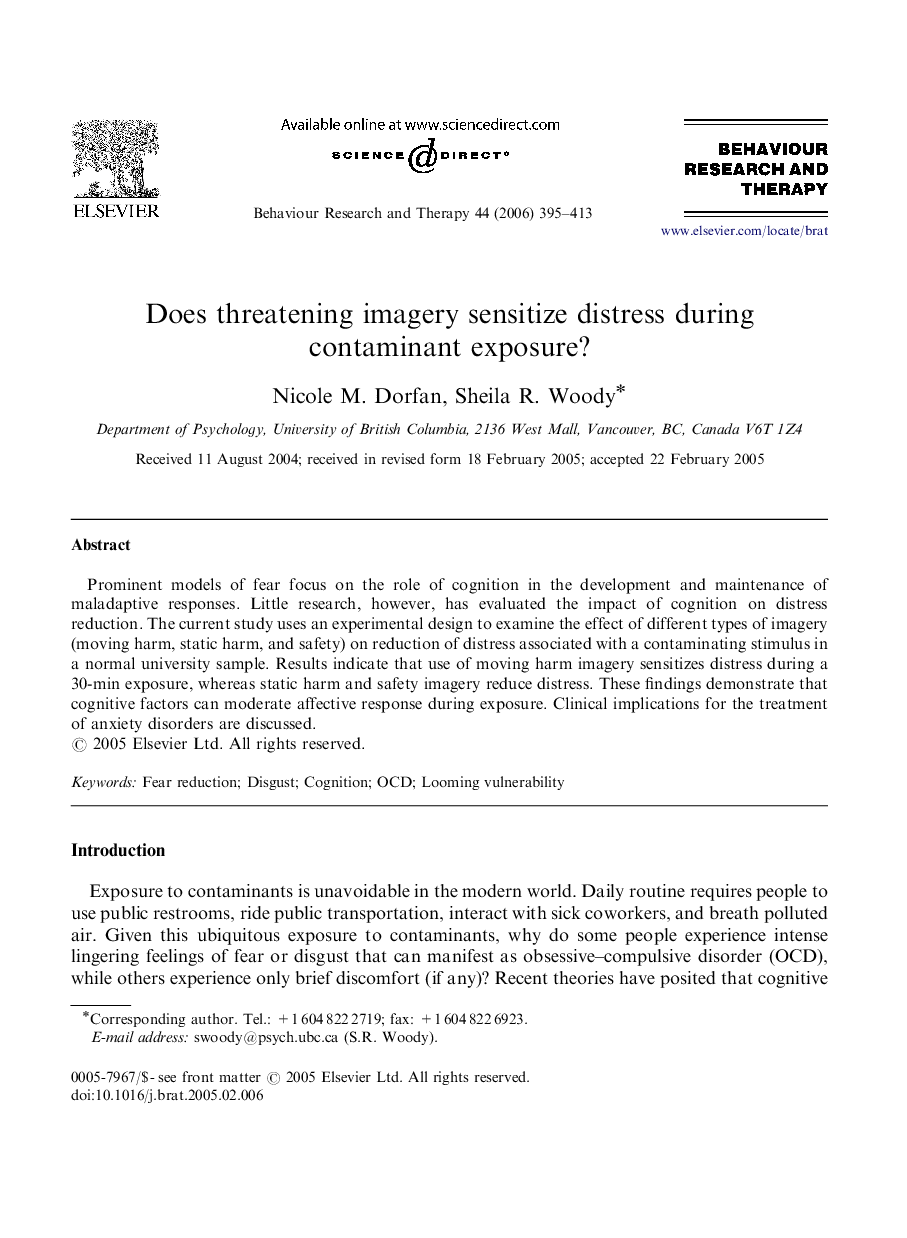| Article ID | Journal | Published Year | Pages | File Type |
|---|---|---|---|---|
| 902613 | Behaviour Research and Therapy | 2006 | 19 Pages |
Prominent models of fear focus on the role of cognition in the development and maintenance of maladaptive responses. Little research, however, has evaluated the impact of cognition on distress reduction. The current study uses an experimental design to examine the effect of different types of imagery (moving harm, static harm, and safety) on reduction of distress associated with a contaminating stimulus in a normal university sample. Results indicate that use of moving harm imagery sensitizes distress during a 30-min exposure, whereas static harm and safety imagery reduce distress. These findings demonstrate that cognitive factors can moderate affective response during exposure. Clinical implications for the treatment of anxiety disorders are discussed.
